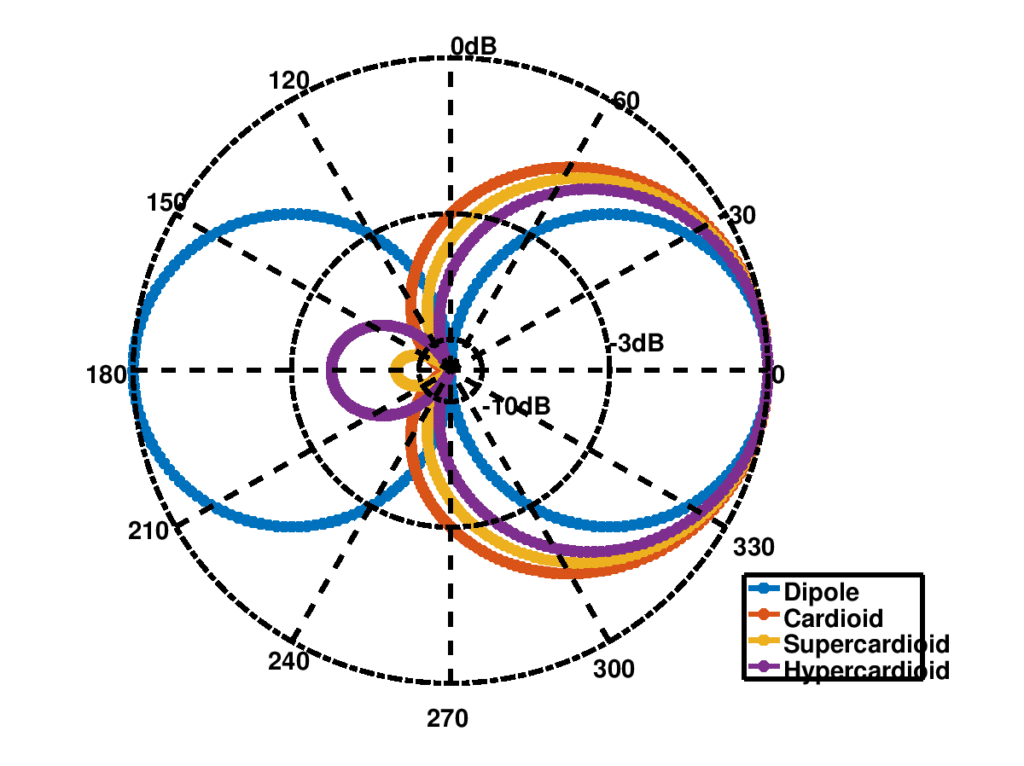In some applications, the signal to noise ratio improvement and desired beamwidth leads to the use of two microphones not being adequate. Three microphones may be utilized. If differential beamformers are deployed, the order will have to be second order purely based on the number of microphones. The topology could be linear or non linear.
Consider a three microphones linear array as shown in Figure 1 below:
Figure 1: Three microphone array
The DMA beamforming is an optimization problem to meet constraints for
microphones. For three microphones, the constraints are:
and
where is the desired beam direction and
are desired null directions. Given
, the choice of
will determine whether the spatial beam will be a dipole, cardioid, hypercardioid or supercardioid. Figure 2 below illustrates these 4 spatial beams.
Figure 2: Different spatial patterns
VOCAL Technologies offers custom designed solutions for beamforming with a robust voice activity detector, acoustic echo cancellation and noise suppression. Our custom implementations of such systems are meant to deliver optimum performance for your specific beamforming task. Contact us today to discuss your solution!

